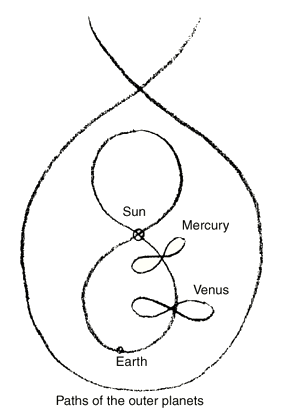 |
| The Christ Child |
Astronomy in Relation to the Other Scientific Disciplines.
Lecture 17 of 18.
Rudolf Steiner, Stuttgart, January 17, 1921:
My Dear Friends,
May I first refer to a matter from which misunderstandings might arise in future if some of you are thinking further along the lines we have been indicating.
May I first refer to a matter from which misunderstandings might arise in future if some of you are thinking further along the lines we have been indicating.
This is essential: You must imagine the plane in which I am drawing the Lemniscate (Fig. 1) to be rotating about the Lemniscate axis, ie. about the line joining the two foci, — call it what you will. I should therefore have to draw the Lemniscate in space. This (Fig. 1) is the projection of it. Such is the drawing of the Lemniscate which you must have in mind with regard to all that I have been saying, — so for example when you are tracing the bony system or the nervous system in man. Even the blood-circulation can be traced in this way. You must imagine it all, not in a plane but in space. The figure eight — the Lemniscate — is therefore legitimate, but as I said before, you are really dealing with geometrical figures of rotation. This also underlies what I have just been saying. The forms of our inner organisation, in the nerves-and-senses system and in the metabolic and limb-system respectively, are mutually related upon the principle of a lemniscate of rotation.
Figure 1
We were obliged to seek the criterion of the true spatial movements of our Earth in changes that go on in man himself. We human beings are, after all, in some way spatially united with the Earth. So long as we merely look at the movements from outside, — then, as I said before, we never get beyond the relativity of movements. If we ourselves however are taking part in the movements and by so doing we perceive internal changes in the moving body, then in these inner changes we can, as it were, read the movements and know them to be real. This is the thing that matters.
We pointed out that in the processes of human metabolism we have an inner criterion of man's deliberate movement, wherein he may be said to move his centre of gravity parallel to the surface of the Earth. Then there are processes very similar to these metabolic processes, which accompany our deliberate movements. They give us a criterion of a true movement which we undoubtedly describe in cosmic space together with the Earth. I referred to the phenomena of fatigue occurring in the course of the day, — i.e. while the Sun changes its position in the heavens. We may formulate it thus: — That which takes place between the head and the rest of man in a vertical direction when man is upright, takes place in a direction parallel to the surface of the Earth — that is, in the direction characteristics of the animal spine — when man is sleeping. Comparing human metabolism in sleeping and in waking respectively, we have indeed a kind of reagent for the relations of movement of Sun and Earth.
Thence we can now pass on to the other kingdoms of Nature. We see the plant, maintaining a radial direction, — the same direction we human beings have in waking life. We must be clear however, when comparing our own vertical direction with that of plant growth, that it is not permissible to think of them with the same sign. We must give opposite signs to the two. Many are the compelling reasons for us to do this: to give to man's vertical direction the opposite sign to that of plant growth. I will refer only to one such reason, mentioned before. The process of plant growth, culminating as it does in the organic deposition of carbon, is so to speak cancelled-out in man: It must, as it were, be negated. The very thing the plant consolidates into itself, man must get rid of. Hence, my dear friends, we only find our way aright if we think thus: The plant grows radially upward from the Earth, up onto cosmic space. Ourselves we must imagine in a different way. There is our physically visible growth, but we must think of something super-physical, invisible, growing down to meet it — growing into us, as it were, from above downward. Herein we have to seek an understanding of the human form, — its vertical direction. We must imagine that while man no doubt grows upward, a kind of invisible plant-formation grows down to meet him. It is a plant-form with its roots unfolding up towards the head and its flowers downward. It is a negative plant-forming process, opposite to the man-forming process. In this sense we must recognize, which movements are alike in kind. As the plant grows away from the Earth, so have we to imagine this super-physical man-plant growing in from cosmic space, even from the Sun, towards the centre of the Earth. This then is what we have. (I say again, I can only indicate general directions: you will be able to follow them up in the light of empirical phenomena) In what we here see (Fig. 2) as a line of like direction, a line of growth, but in the one case striving positively outward, in the other negatively back and downward — in this we have to seek the connecting line of Earth and Sun. You cannot think of it in any other way. Nay, to imagine it thus is comparatively simple, even trivial. You will perceive in this very line the line of movement both of Earth and Sun. The lines of movement both of Earth and Sun are to be looked for in the line that joins the two. Moreover, the line will always prove to be vertical in relation to the surface of the Earth.
Figure 2
What I have here been putting forward ought really to be the theme of many lectures. I do however still want to give you something more substantial, as it were, for you to get to grips with. I want to lead you to a more tangible result, though it will have to follow rather abruptly on the more methodical reflections we have hitherto pursued.
We have been led to realize that Earth and Sun must be thought of as moving in a certain sense in the identical orbit and yet again in a way opposite to one another. You will get a more substantial line of what this means if you recall what was said yesterday. The constitution of the Sun, I said, — with the Sun's nucleus and then the photosphere, atmosphere, chromosphere, and corona — can be imagined in no other way than this: While on the Earth craters are formed by outward thrusts and movements, and we think therefore of processes that work from within outward (fundamentally the same is true even of the tides) — in the Sun on the contrary we have to go from without inward. The Sun releases its streams and currents from the surrounding periphery inward to the interior, to the solar nucleus. In a sense therefore, we see what is going on the Sun's environment as we should see things going on Earth if we were situated in the Earth's centre and looking outward, — only we should then have bent the convex into the concave. Looking into the Sun, it is as though we should be witnessing earthly processes from the Earth's centre; only for this comparison the Earth's inner surface, which is concave, must be bent convex, so that the interior of the Earth becomes the exterior of the Sun. Taking your start from this idea you will be able to realize the polar-opposite character of Earth and Sun. This too is most important: to realize how the Sun' s constitution derives from the Earth's once more by a turning inside-out, — by the same process I explained for the relation of the human metabolic and limb-system with the skull-bone. The coordination of Man and the Cosmos is the more thoroughly revealed. The polarity in man is in its inner quality and process like the polarity of Sun and Earth.
I shall now pursue a line of thought which may look problematical to some of you, yet you would feel it to be thoroughly sound if we had time to go into all the connecting links. However, as I said just now, I want to give you something more substantial. We have to look for a curve which makes it possible for us to imagine the movements of Sun and Earth taking their course in one and the same path and yet in some sense contrariwise. The curve can be determined, unambiguously. If you envisage all the relevant geometrical positions which are to be found in this way, the curve, I say again, will be uniquely determined. You must imagine it like this (Fig. 3), — a rotating lemniscate which at the same time moves on through space, resulting in a lemniscatory screw or spiral (as indicated in the Figure). Imagine the Earth to be at some point of this curve and the Sun at another, with the Earth following the Sun in movement. So then you have the movement of the Earth up here, the Sun down here. They go past each other. Taking all the valid criteria into account, this is the only way to conceive the real underlying movements both of the Earth and of the Sun. There is no other alternative than to imagine it arising on this basis: Earth and Sun are moving, following one another, along a lemniscatory spiral; what is projected into space arises out of this. Here is the line of sight (ES, Fig. 3). You are projecting the Sun in this position (S); thereafter, you may assume, the Sun has gone up here (S1). You get the apparent position, including all the relevant and necessary factors, simply as the resulting projection when Earth and Sun move past each other along this line. But I repeat, you must include the manifold corrections, — the Bessel equations and so on, — if you expect your calculation to come true. You must include in the geometrical loci all that is really given. So too you must take into account what I mentioned before, how the Astronomy of today uses three Suns in its calculations: the real Sun, the Dynamical Mean Sun, and the Astronomical Mean Sun. Two of them are of course imaginary; only the real Sun is actually there. For our determination of Time however, we reckon first with the Dynamical Mean Sun, which coincides with the true Sun at perigee and apogee and nowhere else. And then we have the third Sun, which only coincides with the other at the equinoxes. You only need correct, according to all this, the accepted notion of the Sun's apparent path. Take all of this together and work it out; then you will certainly get this result, — in full agreement with what we also found observing Man's relation to the Cosmos.
Figure 3
We now need to relate this curve in the right way to our solar system. I will begin by drawing the ordinary hypothetical form of the solar system (Fig. 4), omitting the two outermost planets for today, for they are not essential in this connection.
Figure 4
Here (disregarding the relative measures) are the orbit of Saturn, the orbit of Jupiter, the orbit of Mars, the orbit of the Earth with the Moon, the orbit of Venus, the orbit of Mercury, and the Sun. Somewhere along these orbits we should then find the respective planets. Let us assume to begin with that this is a valid perspective from some aspect or other. The question then is how the path of Sun and Earth as we have now described it fits in with this picture. Work out the calculation in the way indicated and you will find that it fits in as follows. We have to draw the path of the Earth with the Earth tending in a sense towards the place where the Sun has been, and then again the Sun towards the place where the Earth has been. We thus get the one self of the Lemniscate — Earth, Sun, Earth, Sun. When this has been gone round, then it goes on (Fig. 5). They move past each other, as you see.
Figure 5
Thus we obtain the true path of Earth and Sun if we alternately imagine the Earth to be at the place where in our usual drawings we are wont to put the Sun, and the Sun at the place where we are wont to put the Earth. The fact is, we do not get the true relation of movement as between Earth and Sun if we assume either the one or the other to be at rest. We must imagine both to be in movement, whereby the one follows the other, yet at the same time they go past each other. So then we have to picture it. Seen in perspective, the Sun is alternately in the middle point of our planetary system, and then again the Earth is where we normally conceive the Sun to be. They change places, taking turns as it were. But it is complicated, for in the meantime the planets too, needless to say, have changed their situation, which brings in no little complication. However, if I take this, to begin with, to be a true perspective, I shall draw it thus (Sun in the middle point). Then as it were I get the other valid order by drawing the ideal sequence of the planets with the Earth here (Earth in the centre) and then Moon, Mercury, Venus, Sun, Mars, Jupiter, and Saturn. You see, we are in a way misled by the perspectives, to the establishment of an extremely simple system, whereas in fact it is by no means simple. It is as though, with respect to the planets, Earth and Sun were taking turns, alternately being in the centre of the system.
I confess it is not at all easy for me to be telling you these things, which at the present stage might still be thought fantastic. We cannot not now bring all the mathematical paraphernalia to bear on them, but I assure you they can be calculated in all detail. The desire was for me to explain the relations of Astronomy to other branches of Science; hence at the end of these lectures I must try to give a résumé as clear and as complete as possible.
Tracing the path of Earth and Sun (now, once again, apart from the planetary system as a whole), we have then to imagine a Lemniscate in which the Earth is following the Sun. Here it is, projected (Fig. 6). Incidentally, you may also see in this a possibility of giving meaning to the idea of Gravitation. The one draws the other after it: that is the underlying principle. Think of it in this way, and you will no longer need the somewhat questionable quality of gravitational and tangential forces, for they are here reduced to a single force. Think it through thoroughly and you will find it so. You must admit, it is a rather problematical feature in the Newtonian conception. We are to think of the Sun in the centre and the Planets around it — endowed, one and all, with a kind of “shove” in the tangential direction, one and all, without presupposing which, the Newtonian system would break down.
Figure 6
Taking this then (Fig. 5) to be the path of Earth and Sun, — if you wish to bring out in perspective, along with the course of Earth and Sun, the path-forms of the other planets, you must imagine the paths of the inferior planets somewhat in this way (small lemniscates in Figure 6). This will enable you — if this be the line of sight — to get the perspective of a planetary loop, for a certain position of the planet along its path. The line of sight is here (v). In this position (s) we get the loop, while these two branches (u) will appear to run out into the infinite. On the other hand, taking this once more to be the path of Earth and Sun and this the path of the inferior planets, you must imagine the corresponding paths of the superior planets to be lemniscates like this (Fig. 7). I should now have to go on drawing upward, but the nearest part would be like this. And now this lemniscate [the lemniscate of Sun and Earth] moves on, makes its way through, — through the lemniscate of the superior planets.
Figure 7
It is a system of lemniscates in determined order and relation. Such are the paths of the planets; such also is the path of Earth and Sun. Now you will easily harmonise what I have here presented in the diagrammatic outline with the fact that we see the loops of Venus and Mercury in conjunction and those of Jupiter, Mars, and Saturn in opposition. In our perspective it is the necessary outcome. Above all, you will recognize once more what the connection is between the planets and the human being. You need but look at this picture and you will say to yourselves: What you have here, in Mercury and Venus, is near in direction to the path of Earth and Sun. It is in the cosmic neighbourhood, so to speak, of the path of Earth and Sun. It is therefore in this relation: It has to do with the radial line — fundamentally, the connecting line of Earth and Sun. As against this, the other paths — those of the outer or upper planets — work more by virtue of their lateral or spherical direction. In their effects, they more approach what is peripherical in movement. We may then also formulate it thus: What we behold in Venus and Mercury is far more akin to what is living as a cosmic reality in us ourselves, while what we see in the paths of the superior planets is more akin to the fixed-star Heavens in general. Here too we reach a kind of qualitative valuation of what is taking place in the Cosmos. Of course the lines I have been drawing are only meant diagrammatically. It should really be put this way: An inferior planet has a path, making a lemniscate loop-curve the centre of which is the Earth-and-Sun path itself. A superior planet, on the other hand, embraces the Earth-and-Sun path in its own lemniscate-loop. Such is the essence of the matter; the thing itself is so complicated that the mental pictures we can form can scarcely be more than diagrammatic.
You see from this, however, my dear friends, — unwelcome as the news may be to some, — we need to get away from a principle that crept into the explanations of nature with the beginning of modern time. I mean the overriding principle of simplicity. It grew to be the accepted tendency. The simple explanation is the right one! Even today one is severely censured if one puts forward what is not simple enough. Yet Nature is not simple. On the contrary, it would be true to say: Nature — the real World — is that which, looking simple, proves on examination to be complex. What appears simple on the surface is as a rule only the outward glory, only the outward semblance of it.
It was not by any means my prime intention to let these lectures culminate in this way. I am not pre-disposed on principle to put forward things out of keeping with the accepted notions. We only want to get at the truth. As it is is, however, the assumptions of the modern astronomical world-picture involves so many contradictions that in the end, having studied the current astronomy, one comes away dissatisfied. Hypothetically, it begins by assuming the world-picture I have also indicated in this sketch (Fig. 4), — the elliptic orbits of the planets, the Sun in one focus, and so on. The planetary orbits are then assumed to be in different planes, inclined to one another. For there is no alternative at this stage; the different inclinations are given by the perspective. The complications of it are complications of perspective. Yet the real calculations are not done on the basis of this simple solar system which people have explained to them at school and then retain for life. In practice, they take their start from the Tychonic system. Then one correction after another has to be applied. From the accepted formulae, one calculates, say, the position of the Sun at a given time, and it does not come true. Instead of the real Sun being there, it will be the Dynamical or Astronomical Mean Sun, — something fictitious therefore. So it is time and again: Imagined entities are there, and more corrections must be introduced to get to what is real. In these corrections there lies hidden that which would lead to the truth. Instead of holding fast to the conventional formulae and being led to fictitious entities, one should bring movement into the formulae themselves — make them inherently mobile — and then draw curves accordingly. If one did so, one would soon reach the system here drawn, though I repeat, the drawings are diagrammatic.
What I have sought for above all is that a picture should arise in you of the harmony there is between the organisation of Man and the constitution of the Cosmos. If you have really been following thus far, you cannot possibly regard this as offending against the scientific spirit. When the transition emerged from the Ptolemaic to the Copernican World-picture, a profound change was taking place in the whole way of interpreting the connection of man with the celestial phenomenal. In very ancient times — though from a different perspective, so to speak, as mentioned a few days ago — man still had clear and penetrating ideas of the harmony between the movements in the Heavens and the form of Man. What they then had was more instinctive; raised into consciousness, however, it becomes the true spirit of modern science, to which we too must be faithful, — the more so when venturing upon this problematic ground.
Fundamentally there is no difference between the way of applying mathematics in general and the way we are applying this qualitative mathematic (which we have first had to develop) to man and the celestial phenomena. There is another thing, however, you need to recognise in this connection. In the same period when the transition was developing between the old heliocentric system and the new heliocentric, the evolution of mankind suffered a certain break in the life of knowledge: namely the bridges were demolished between the physically sense-perceptible or natural world-order and the ethical or moral. I have often mentioned in other lectures how we in our time are thus torn asunder. On the one hand our theoretical ideas about Nature lead us to conceive some primeval cosmic entity in the beginning, from which the Universe was to unfold by purely natural events. So then evolved the Earth on which we are. So it goes on again by dint of purely natural laws and it will one day reach its end. In the midst of it are we. Out of our inner life there arise ethical impulses; no one knows where they come from. And if one thinks according to this dualism, one cannot doubt that at some future time even these impulses will suffer burial in the universal grave.
This is the way one thinks when failing to build a bridge between the natural world-order and the ethical. I have indicated on other occasions how the transition is to be looked for. It can indeed be found throughout Anthroposophical spiritual science. Here I would only draw your attention to a specific aspect of it, — for the rift between the natural world-order and the moral makes itself felt in diverse realms, and among others it affects our present subject. Here too, in the evolution of mankind the natural aspect and the ethical have in a certain way fallen asunder. The ethical has been cultivated in Astrology, the natural in an Astronomy bereft of spiritual values. There is no need for me to insist that Astrology as pursued today is scientifically unacceptable. I need not prove to you that this is an aberration on the one side. Yet on the other side our Astronomical world-system, as we call it, also involves an aberration. All these perspective lines — or if you will, projective lines — that are conventionally drawn to represent our solar system, are not to be conceived as realities at all. Nor even are the lines that arise when we observe a further resultant movement, built up again of many components, namely the Sun's proper movement, the whole solar system going with it. All these things are built up of very many components; we are in the midst of relativities and we need some criterion to hold to. The criterion may seem vague to many people, yet it is there and it can lead us to an understanding of the curves in question. We have to penetrate the secret: Why is it man has an inner need to lie down horizontally in sleep, — thus to escape in sleep from the connecting line of Earth and Sun? Just as he can only carry out his voluntary movements while moving his centre of gravity at right angles to the line joining Earth and Sun, so with his involuntary movements: He can only carry them out by lying down, putting himself in a direction at right angles to the path of Earth and Sun. If he wants to escape from the effects of voluntary movement — if he wants what would otherwise work itself out in voluntary movement, to work inside him and bring about a metabolic interchange between his body and his head — he must lie down, he must align himself in this way. In like manner you will be able to find other directions that are at work in man.
From the directions ascertainable in man — derivable from man's own form and stature — you will be able to compose the curves that are really there in the movement of heavenly bodies. Granted, it is not so easy as what is done with mere telescopes and measured angles. Yet it is the way, the only way, to find the relationship between the human being and the celestial phenomena.
Related post: https://martyrion.blogspot.com/2019/12/the-christ-child-in-womb-of-prakriti.html
Source: http://wn.rsarchive.org/GA/GA0323/19210117p01.html
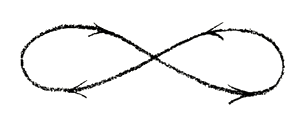
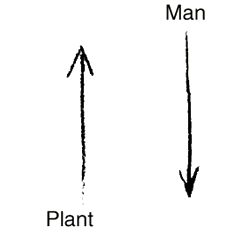
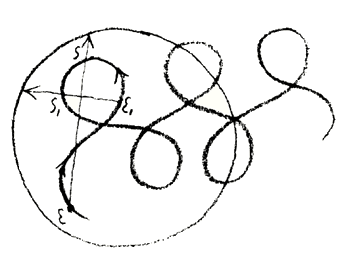
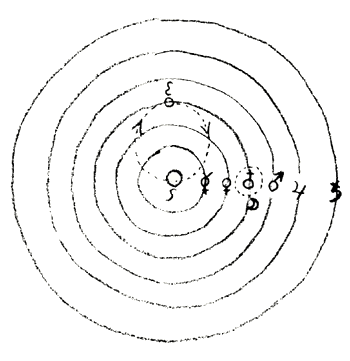
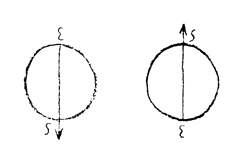
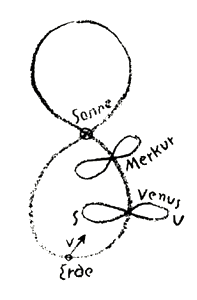



No comments:
Post a Comment